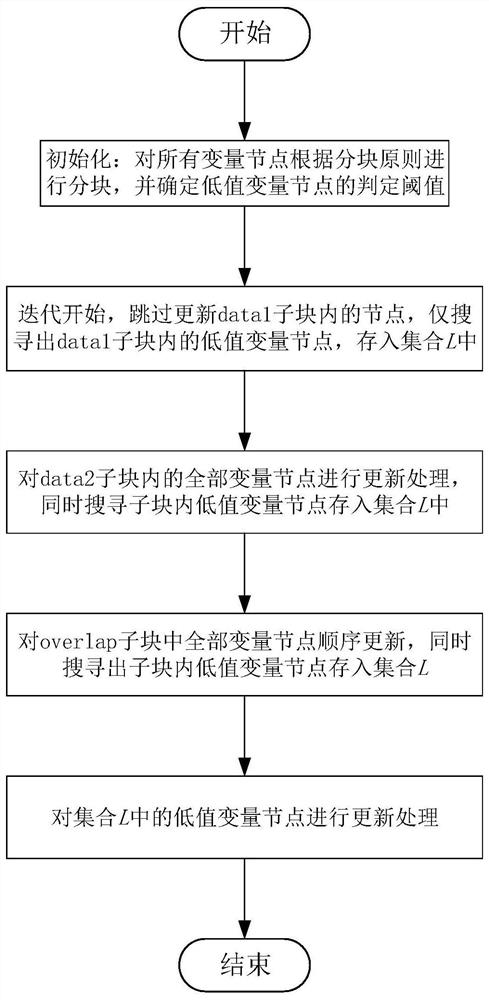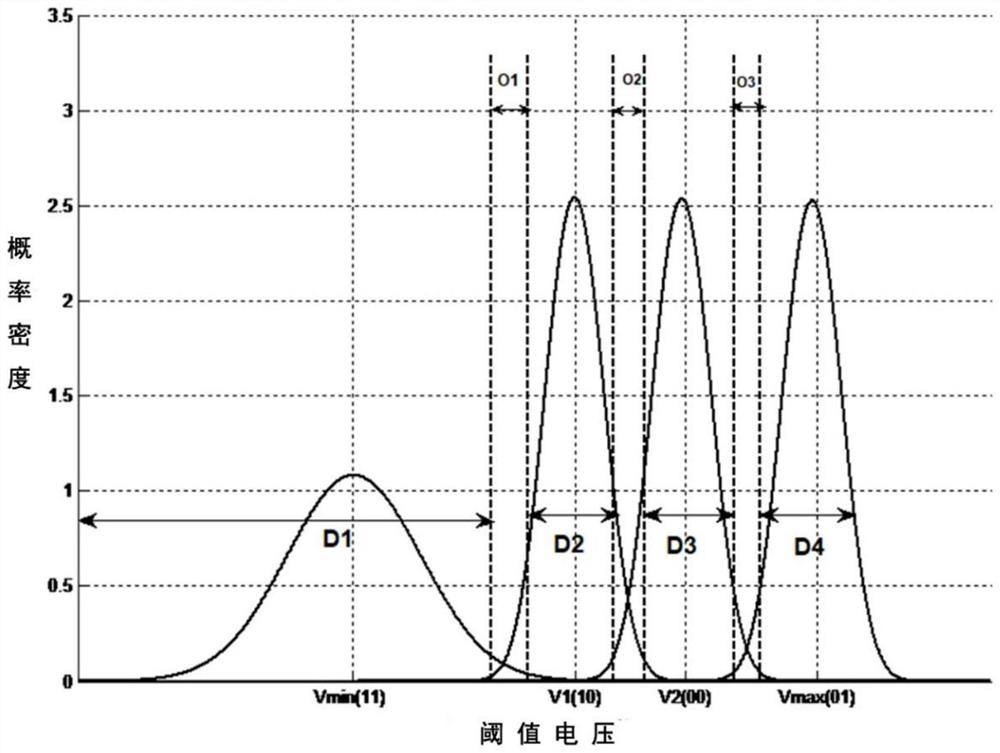Decoding method of ldpc code based on dynamic block update of variable nodes
An LDPC code and variable node technology, applied in the field of LDPC code decoding, can solve the problem that it is difficult to meet the error correction performance requirements of NAND-Flash
- Summary
- Abstract
- Description
- Claims
- Application Information
AI Technical Summary
Problems solved by technology
Method used
Image
Examples
Embodiment
[0063] Such as figure 1 , figure 2 As shown, this embodiment provides an LDPC code decoding method based on variable node dynamic block for MLC type NAND-Flash, including the following steps:
[0064] S1. In the NAND-Flash storage channel, all variable nodes are divided into blocks according to the probability that the voltage of the variable node falls into each area: the variable nodes in the non-overlapping area are divided into Data blocks, and the variable nodes in the overlapping area are divided into Divided into overlapping sub-blocks;
[0065] S2. Continue subdividing each sub-block into a plurality of sub-blocks according to the absolute value of the variable node initial LLR value in each sub-block: continue subdividing the Data block into a data1 sub-block and a data2 sub-block;
[0066] S3. Skip the data1 sub-block, update the variable nodes in the data2 sub-block and the overlap sub-block in sequence, and search out the data1 sub-block, data2 sub-block, and ov...
PUM
 Login to View More
Login to View More Abstract
Description
Claims
Application Information
 Login to View More
Login to View More - R&D
- Intellectual Property
- Life Sciences
- Materials
- Tech Scout
- Unparalleled Data Quality
- Higher Quality Content
- 60% Fewer Hallucinations
Browse by: Latest US Patents, China's latest patents, Technical Efficacy Thesaurus, Application Domain, Technology Topic, Popular Technical Reports.
© 2025 PatSnap. All rights reserved.Legal|Privacy policy|Modern Slavery Act Transparency Statement|Sitemap|About US| Contact US: help@patsnap.com



